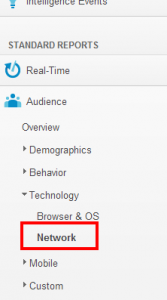We’re constantly hearing advice telling us that “sales and marketing need to be better aligned”. Like many things: easy to say, hard to do. Sure, it makes sense, but how do you actually make it happen using existing tools and resources (especially when you’re a department of one)?
Here’s what you do:
1) Ask, beg, or demand to be invited the next sales pipeline meeting.
Better yet, just show up! Make it your business to be there. The sales manager shouldn’t object. After all, marketing’s ultimate goal is revenue growth. The point is that you, as a marketer, need to take the time to know what is happening in the world of sales.
Specifically:
Who is in the sales pipeline?
Which opportunities are the big ones?
Who’s gone quiet?
Who’s presenting the most challenges?
The best way to learn this is to be there. There’s just no substitute.
2) Check your CRM system (assuming you have one, of course)
Look at data around the prospects, what products or services they’re interested in, notes from the sales rep, etc. It’s not a replacement for being physically present at the sales pipeline meeting, but it’s a great supplement. If the CRM system is being utilized properly by the sales team (realizing that can be a big “if”), then you should be able to get some easy to digest data about your top prospects.
3) Take action and arm your sales team
This is the fun part and you don’t need any new expensive tools to do this. Basically, you need web analytics and your brain to do a little deductive reasoning. If you do not have web analytics, then stop reading and go sign up for a free Google Analytics account. Assuming you have analytics, log in and have at it.
Using Google Analytics as an illustration, below are a few examples of things you can do that your sales team may find incredibly valuable.
a. Click on the “Network” Tab on the Google Analytics menu.
b. If you have a good volume of traffic, you’ll see a long list of ISP’s or service providers. Most (but certainly not all) companies larger than 50 employees have their own network name (as opposed to having someone like Road Runner or Comcast as their ISP). This is far from being a perfect metric, but it gives you something to go on.
 c. Roll up your sleeves and get granular.
c. Roll up your sleeves and get granular.Find out if that prospect is engaging with you or not. You can gain some clues about what that prospect is looking at, what are they researching, etc. In the search field (see below), type in some variations of the prospect company name in your sales pipeline. For example, let’s say UPS is in the sales pipeline. You would start typing in either “UPS” or in this case “United”:
Click on the name of the prospect and you can see more drill down detail (screenshot below):
Simply by drilling down a few levels you can tell when people from that company visited your site (red square) and what that mix of visitors look like (green box). The percentage of “new visits” can be very relevant here because a high percentage may be a strong indication that multiple people within that company are doing research on your site.
d. Find out WHAT that prospect is looking at:
First, just go to content (left hand side) and click on “All Pages”:
Next, just scroll back up to the top and take the first step to creating an advanced segment by clicking on the link:
After that, click on create a new custom segment
Next, click on the dropdown menu until you find “Service Provider” (It’s the same thing as “network” – confusing, I know). Start typing in the name of the prospect (in this case, “United Parcel”. Then click on “Preview Segment”
You can save the segment if you wish, but you can quickly end up with a boatload of advanced segments. I usually just do the preview.
Now you do a screengrab and tell exactly:
- Which content is being viewed
- What is the level of interest?
- How often those people are coming to the site
RELATED CLASS: Learn how to build the ultimate Google Analytics dashboard.
4) Analyze and report
This is the part where you get to use your brain to provide some insights for the sales team. For example, recall some of the things you heard from sales in the pipeline meeting.
Is the prospect in a due diligence phase?
Are they doing some product specific comparisons? If so, which products?
Are they reading and downloading case studies or other materials?
Apply some deductive reasoning along with some common sense and you’ll be able to give the sales team some insights that can help them advance the deal.
Be careful though, the method I just showed you doesn’t scale very easily. You have to be prepared to spend some time drilling into data so you’ll want to just pick a handful of top prospects (for example, maybe one that went radio silent or one that sales doesn’t have a good feeling about).








No comments:
Post a Comment